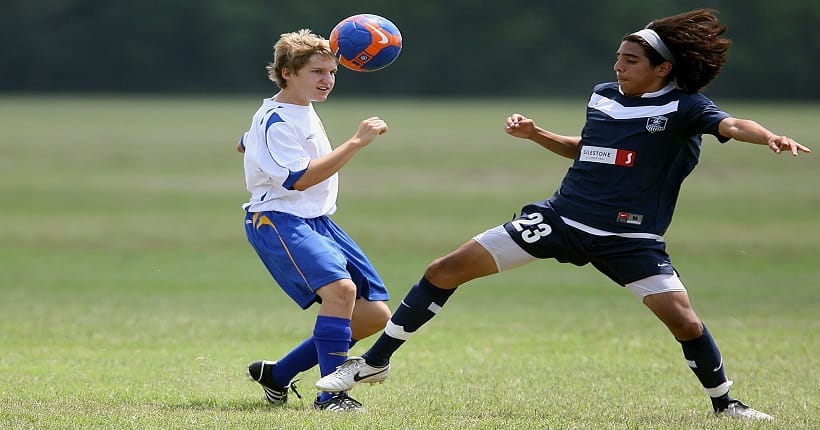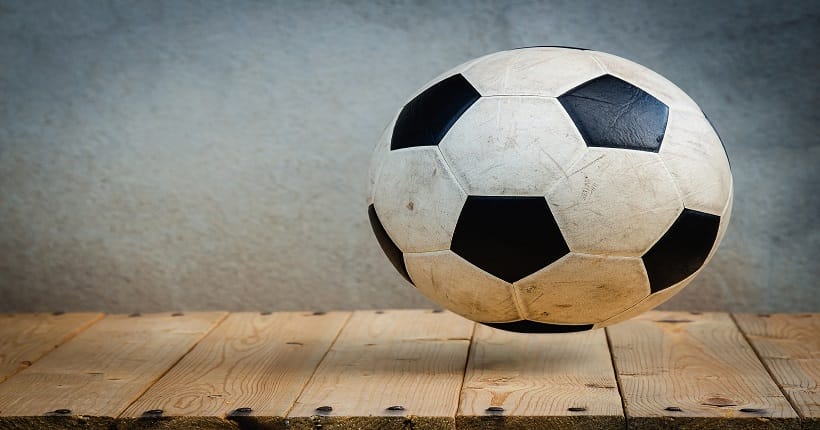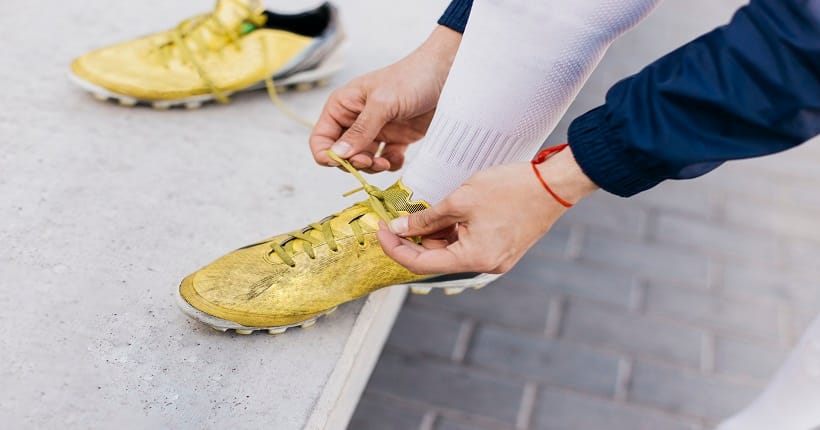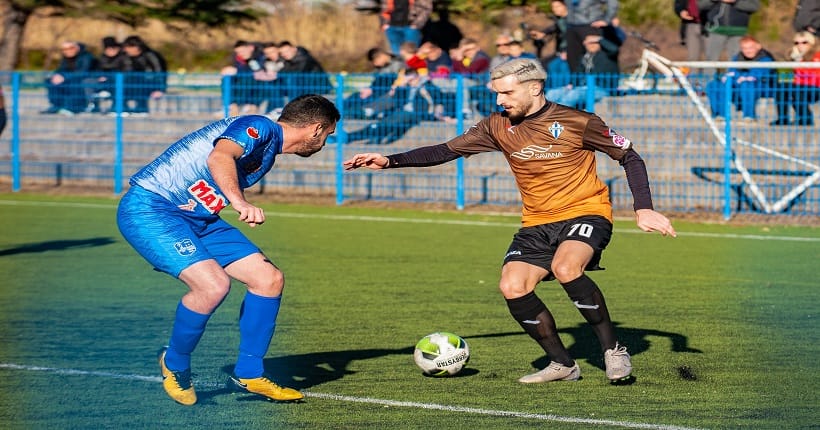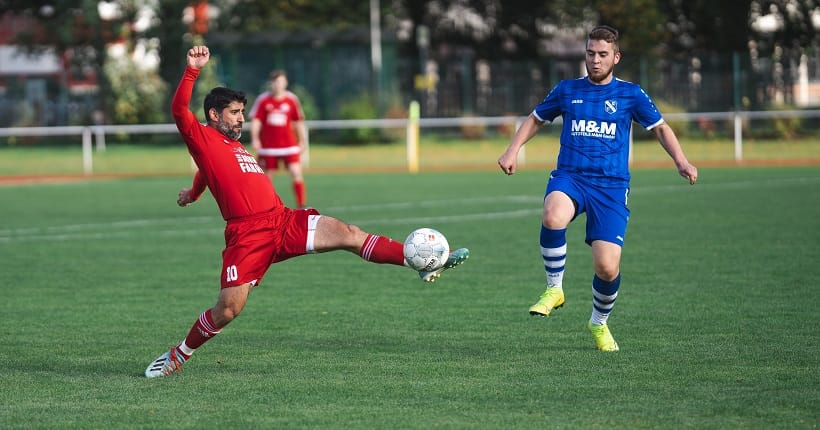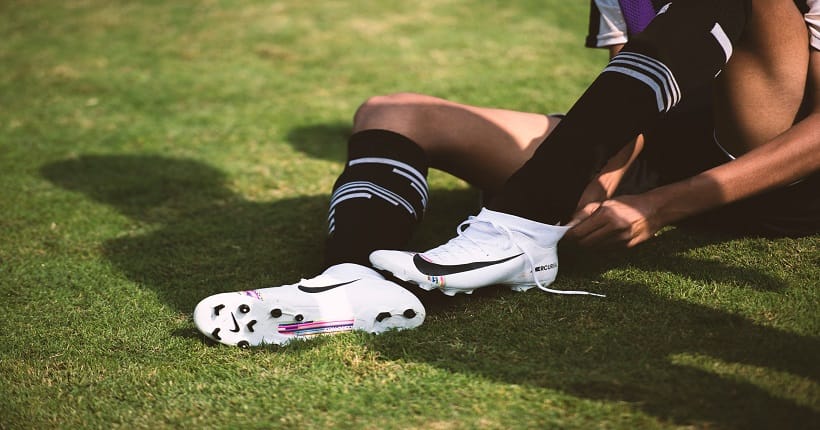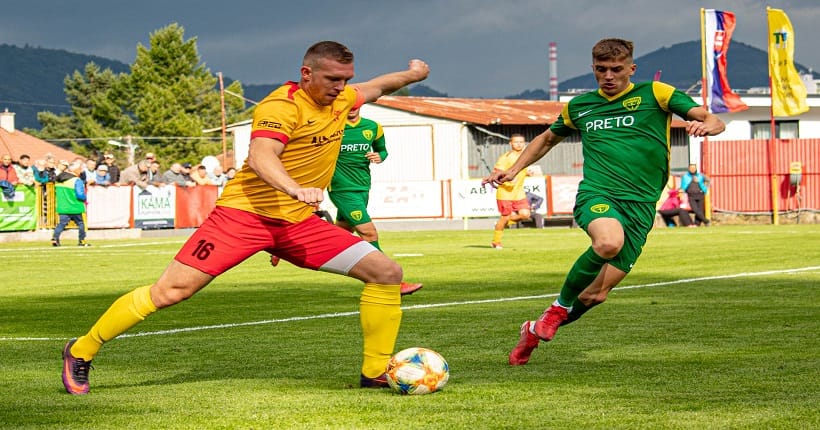Do Soccer Players Wear Cups?
Soccer players typically do not wear cups due to the restrictive nature and lack of comfort they provide. In the world of soccer, there has been an ongoing debate about whether players should wear protective gear, such as shin guards and mouthguards, to prevent injuries.
Interestingly, one piece of equipment that is rarely seen on the soccer field is the cup. Unlike sports like hockey or American football, where cups are a common part of the uniform, soccer players tend to forgo this particular protective gear.
The main reason behind this is the restrictive nature of cups, which can affect a player’s agility and overall performance on the field. Additionally, soccer players may find cups uncomfortable to wear, as they can cause irritation and restrict freedom of movement. However, it is important to note that some soccer players still choose to wear cups based on personal preference or specific playing conditions. Regardless, the decision to wear a cup ultimately lies with the individual player.
Importance Of Protective Gear In Soccer
Soccer, often referred to as the beautiful game, is a high-intensity sport that requires agility, speed, and physicality. With players engaging in tackles, clashes, and challenges throughout the game, injuries are an inevitable part of the sport. Therefore, the use of protective gear becomes paramount to prevent or reduce the severity of these injuries. In soccer, various protective gear options are available, including shin guards, cleats, headgear, and mouthguards. However, one common question that arises is whether soccer players wear cups for added protection.
Injuries During Soccer Matches
Soccer matches are notorious for the potential of abrupt collisions and intense physical contact. Players often tackle aggressively, clash for the ball in aerial challenges, and encounter unexpected trips and falls. The nature of the sport exposes players to various types of injuries, ranging from minor cuts and bruises to more serious damage.
Some common injuries encountered in soccer matches include:
- Bruises and abrasions
- Strains and sprains
- Fractures and broken bones
- Concussions
- Twisted ankles
- Knee ligament injuries
These injuries can occur due to multiple factors such as aggressive tackling, accidental contact with opponents or the ball, sudden change in direction, or even poor playing surface conditions. While soccer players may not specifically wear cups to protect against these injuries, protective gear remains vital to minimize the risk and severity of harm.
The Need For Protective Gear
Protective gear serves as a crucial aspect of soccer equipment as it helps safeguard players against harmful impacts, potential fractures, and even long-term health issues. Here are some reasons why protective gear is essential:
- Preventive measure: The primary purpose of protective gear is to prevent injuries whenever possible. For instance, shin guards offer protection to the lower legs and shins from high-impact tackles, reducing the chances of deep cuts or broken bones.
- Enhanced confidence: Soccer players wearing protective gear feel more confident while engaging in aggressive challenges. This confidence can improve their overall gameplay and attitude on the field.
- Improved performance: By wearing appropriate protective gear, players can focus on their performance without worrying excessively about potential injuries. This allows them to exhibit their skills and tactics more effectively, enhancing their overall performance.
- Long-term health benefits: Sporting protective gear can help prevent long-term health issues that may arise from repeated exposure to impact and trauma. It helps minimize the risk of chronic conditions often associated with playing soccer, such as joint problems and head injuries.
While soccer players may not typically wear cups for added protection, the importance of protective gear in soccer cannot be understated. Whether it’s shin guards, headgear, or mouthguards, these essential pieces of equipment provide a necessary shield against potential injuries. By prioritizing safety, players can enjoy the game to its fullest while minimizing the risk of harm.
Common Protective Accessories In Soccer
Overview Of Different Protective Accessories
When it comes to soccer, one cannot ignore the importance of protective accessories. Soccer is a physical sport, and players are prone to injuries on the field. That’s why the use of protective gear is essential to minimize the risk of getting hurt. In this article, we will discuss some of the common protective accessories used by soccer players.
Shin Guards: Protecting The Lower Legs
Shin guards are one of the most vital protective accessories used in soccer. These guards are designed to protect the lower legs, particularly the shinbone, from impact and collisions with opponents or the ball. Shin guards are typically made of hard plastic or fiberglass, with cushioning on the inside for comfort and protection. They are worn underneath the socks and are secured with straps to ensure they stay in place throughout the game. Shin guards are a must-have for every soccer player, regardless of their position on the field.
Ankle Braces: Preventing Ankle Injuries
The ankle is a vulnerable area in soccer, and ankle injuries are unfortunately quite common. To prevent these injuries, many soccer players choose to wear ankle braces. Ankle braces provide support and stability to the ankle joint, helping to limit excessive movement and prevent twists or sprains. These braces are typically made of a combination of fabrics and plastic or metal stays to provide both flexibility and rigidity. They can be worn directly on the skin or over socks, and they are adjustable for a snug fit.
Knee Pads: Providing Knee Protection
Knee injuries can be incredibly painful and can take players out of the game for extended periods. That’s why knee pads are an important protective accessory for soccer players. These pads are designed to provide cushioning and protection to the knees, reducing the risk of impact injuries and preventing abrasions when players slide or dive on the ground. The knee pads are usually made of foam or gel, and they can be worn directly on the skin or over tights or compression pants. Some players prefer to wear full-length knee sleeves that offer additional support to the joints.
Common protective accessories in soccer include shin guards, ankle braces, and knee pads. These accessories play a crucial role in minimizing injuries and allowing players to perform at their best on the field. Whether it’s protecting the lower legs with shin guards, preventing ankle injuries with ankle braces, or providing knee protection with knee pads, soccer players prioritize safety alongside their skills and technique.
The Controversy Surrounding Cups In Soccer
Exploring The Debate Around Wearing Cups
Soccer is a sport known for its intense physicality and contact between players. With players constantly jostling for space and battling for possession, it’s no surprise that the topic of protective gear, specifically cups, sparks a heated debate. Whether or not soccer players should wear cups is a controversial subject that has divided opinions among players, coaches, and even medical professionals.
Arguments In Favor Of Wearing Cups
Proponents of wearing cups argue that they provide essential protection for players during intense matches. Some of the main arguments in favor of wearing cups include:
- Enhanced Safety: Cups offer an additional layer of protection for the sensitive groin area, shielding it from potential injuries caused by errant kicks, elbows, or collisions with other players. By minimizing the risk of these types of injuries, cups can allow players to focus on their game without the fear of getting hurt.
- Increased Confidence: Wearing a cup can provide players with a sense of security and confidence, knowing that they are less vulnerable to potential impact. This increased confidence can lead to improved performance on the field, as players are less likely to hold back due to fear of injury.
- Prevention of Long-term Damage: By utilizing cups, players can reduce the chances of sustaining serious injuries to delicate areas such as the testicles. Even minor injuries to this region can have long-lasting consequences, potentially affecting fertility or causing chronic pain. Wearing a protective cup can minimize the risk of such injuries and their potential long-term effects.
Arguments Against Wearing Cups
Despite the arguments in favor of wearing cups, there are also those who believe they are unnecessary in soccer. Some of the main arguments against wearing cups include:
- Restriction of Movement: Cups can restrict a player’s range of motion, affecting their agility and overall performance. Moving freely on the field is paramount in soccer, and any potential impediment to movement could hinder a player’s ability to execute quick turns, sharp passes, or powerful shots.
- Comfort and Discomfort: Wearing a cup may cause discomfort and affect a player’s comfort level during a match. The added bulk and material can lead to chaffing or rubbing, potentially causing distractions and impacting focus on the game. Additionally, cups may become hot and sweaty, further adding to the discomfort experienced by players.
- Reduced Sensation: Some argue that wearing a cup can slightly impair the sensation in the groin area, affecting a player’s kinesthetic awareness during the game. This reduced sensation could impact a player’s ability to execute precise movements and may potentially disrupt their overall performance.
As the debate rages on, the decision to wear a cup ultimately rests with the individual player. While some choose to prioritize safety and protection, others prefer to prioritize flexibility and comfort on the field. Regardless of the standpoint, both sides bring valid points and it’s important for each player to weigh the potential benefits and drawbacks when making their decision.
Do Soccer Players Wear Cups?
In the rough and tumble world of soccer, players face constant physical challenges on the field. With potential collisions, tackles, and stray elbows, it comes as no surprise that some players wonder whether they should wear protective gear, such as cups. In this article, we explore the question, “Do soccer players wear cups?” and delve into the factors that influence their decision.
Factors Influencing The Decision To Wear Cups
Several factors come into play when soccer players consider wearing cups as part of their protective gear. These factors may vary from player to player, reflecting personal preferences, comfort levels, and concerns about potential injuries. Here are some key factors influencing the decision:
Players’ Preferences And Comfort Levels
When it comes to wearing cups, players have different preferences and comfort levels. Some players feel more secure and protected with the additional layer of a cup, while others may find it restricting and uncomfortable. Factors such as playing style, position on the field, and personal experiences play a significant role in determining a player’s comfort level with wearing cups. For instance, a goalkeeper who faces multiple shots on goal may prioritize the added protection, while an attacking player may prefer freedom of movement over the potential discomfort of a cup.
Assessing The Effectiveness Of Cups In Preventing Injuries
Effectiveness is a critical aspect to consider when evaluating the use of cups in soccer. While cups are designed to protect sensitive areas, such as the groin and testicles, their effectiveness in preventing injuries remains a subject of debate. Although players may feel psychologically reassured by wearing a cup, studies have shown mixed results on whether cups significantly reduce the risk of injuries. Therefore, players and coaches must weigh the potential benefits against the discomfort and the potential limitations caused by wearing a cup during intense physical activities on the pitch.
Ultimately, the decision to wear a cup in soccer is a personal choice shaped by individual preferences, comfort levels, and considerations about injury prevention. By understanding the factors influencing this decision and assessing the effectiveness of protective gear, players can make informed choices that prioritizes their performance and well-being on the field.
Alternatives To Wearing Cups
When it comes to protecting sensitive areas during a soccer game, the traditional solution has always been wearing cups. However, some players find cups uncomfortable or restrictive, and may be looking for alternative options that still provide the necessary support and protection. In this article, we will explore a few alternatives to wearing cups that soccer players may consider.
Other Protective Gear Options
While cups are the most commonly used protective gear for soccer players, there are other options available that can offer both support and protection.
Compression Shorts: Offering Support And Protection
Compression shorts have gained popularity among soccer players as an alternative to wearing cups. These tight-fitting shorts not only provide support to the groin area, but also offer protection by holding everything securely in place. The compression technology helps improve blood circulation and reduces muscle fatigue, allowing players to perform at their best without the discomfort of traditional cups.
Furthermore, compression shorts are designed with moisture-wicking properties, keeping the player cool and dry even during intense physical activity. They are lightweight, breathable, and can be worn comfortably under soccer uniforms. With their ability to mold to the shape of the body, compression shorts provide a custom fit, ensuring maximum comfort and protection.
Impact-absorbing Shorts: Reducing The Risk Of Injury
An alternative option to consider is impact-absorbing shorts. These shorts feature specialized padding in the vulnerable areas, such as the hips and thighs, which helps reduce the risk of injury during high-impact collisions or falls.
Impact-absorbing shorts are made with advanced materials that have shock-absorbent properties, dispersing the impact forces and minimizing the risk of bruising or more serious injuries. These shorts provide an extra layer of protection without compromising mobility, allowing players to move freely and confidently on the field.
Moreover, impact-absorbing shorts often feature moisture-wicking technology, ensuring sweat is quickly evaporated and eliminating discomfort caused by excess moisture.
While wearing cups has been the go-to solution for many soccer players, it is essential to understand that there are alternatives available that can provide ample support and protection. Compression shorts and impact-absorbing shorts are just two of these options that players may consider, depending on their personal preferences and comfort level. Ultimately, the most important factor is ensuring the safety and confidence of the player on the field.
Safety Guidelines And Regulations
Rules And Regulations Regarding Protective Gear In Soccer
In the fast-paced and physically demanding game of soccer, safety is of utmost importance. To ensure the well-being of players, various guidelines and regulations have been put in place regarding the use of protective gear, including cups. While it may not be mandatory for soccer players to wear cups, there are specific rules and recommendations that players and coaches should be aware of to mitigate the risk of injury.
Recommendations For Players And Coaches
- Consider the position and physicality of the player: While it is not mandatory for soccer players to wear cups, certain positions and playing styles may warrant additional protection. Defenders and goalkeepers, for example, are more likely to be involved in physical confrontations and may benefit from wearing a cup to safeguard against accidental impacts and collisions.
- Consult with team officials and coaches: Players and coaches should have open communication regarding the use of protective gear. Coaches can assess the individual needs of their players and provide guidance on the use of cups or other protective equipment depending on the player’s age, level of competition, and specific circumstances.
- Ensure proper fit and comfort: If a player opts to wear a cup, it is crucial to choose one that fits snugly and comfortably. Ill-fitting cups can be distracting and uncomfortable, hampering a player’s performance. Additionally, it is important to check for any discomfort or irritation during practice sessions to make necessary adjustments.
- Regularly inspect and replace damaged cups: Over time, cups may become worn out or damaged, compromising their ability to provide adequate protection. Players and coaches should inspect cups regularly for any signs of wear and tear, and replace them as needed to maintain the highest level of safety.
- Focus on overall safety measures: While the use of cups can offer additional protection, it is essential to establish a comprehensive safety protocol that includes proper warm-up exercises, adherence to fair play, and the use of other recommended protective gear such as shin guards and proper footwear. These measures, when combined with sensible judgment and awareness, contribute to a safer playing environment for everyone involved.
By following these recommendations and adhering to the rules and regulations set forth by soccer governing bodies, players and coaches can ensure the safety of players without compromising their performance on the field. While the decision to wear a cup is ultimately a personal one, it is important to recognize the value of protective gear and make informed choices that prioritize player welfare.

Credit: www.usatoday.com
Frequently Asked Questions For Do Soccer Players Wear Cups?
Should You Wear A Cup When Playing Soccer?
Yes, wearing a cup while playing soccer is recommended. It provides protection for your groin area, reducing the risk of injury from kicks, collisions, or falls. Wearing a cup can help prevent discomfort and potential damage to sensitive areas during intense gameplay.
Do Boys Wear Athletic Cups In Soccer?
Yes, boys wear athletic cups in soccer for protection and safety. It helps minimize the risk of injury from kicks, collisions, and falls during the game. It is recommended for players of all ages to wear a cup to protect their groin area.
Should Football Players Wear A Cup?
Yes, football players should wear a cup for added protection during games and practices. It helps prevent injuries to the groin area caused by impacts and collisions. Wearing a cup is essential for the player’s safety and can help avoid severe discomfort and potential long-term damage.
What Are The Man Bra Soccer Players Wear?
Soccer players wear compression tops, also known as man bras, to provide support and reduce muscle fatigue during matches. These tight-fitting garments help improve performance and minimize the risk of injuries.
Do Soccer Players Wear Cups For Protection?
Yes, many soccer players wear cups to protect against injuries in the groin area.
What Is The Purpose Of A Cup In Soccer?
Soccer players wear cups to minimize the risk of painful and potentially serious injuries in the genital region.
Conclusion
To wrap up, it’s important to understand that not all soccer players wear cups. While some may choose to use them for added protection, others find them restrictive or unnecessary. Ultimately, the decision lies with the individual player. Regardless, safety on the field should always be a top priority, and players should take the necessary precautions to protect themselves from potential injuries.

